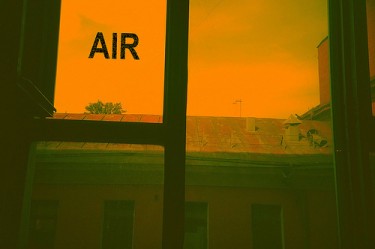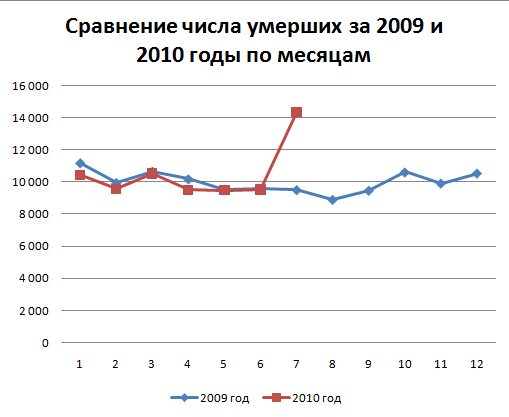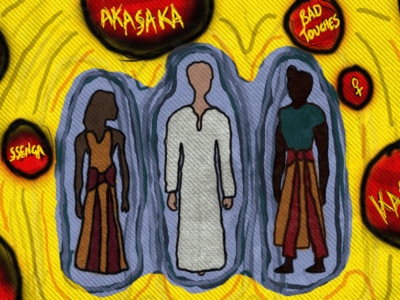Social media played a significant role during the unprecedented Russian wildfires. The Russian blogosphere provided [EN] hundreds of firsthand examples and exclusive evidence of the disaster. It exposed the lack of the government’s accountability and transparency, bypassing the traditional, state-controlled media. It also provided an instrument of social mobilization and mutual aid, thus replacing the unaccountable government with social responsibility of Internet users (as described here [EN] and here [EN]).
There is one specific and sensitive issue, however, where social media played an even more significant role: it was the bloggers who highlighted the sudden death rate increase among Moscow residents in early August. Combined with extreme temperatures and air pollution, the smog created the conditions that proved unbearable for elderly people and those with heart illnesses and asthma. As a result, numerous deaths were reported [EN] by the mainstream media.
Initially, government officials denied the increase in death rates. Then, Andrei Seltsovsky, Moscow health department chief, broke [RUS] weeks of official silence: “The average death rate in the city normally is between 360 and 380 deaths per day. Today, we have around 700.”
Health minister Tatyana Golikova said [RUS] that Seltsovsky's statistics were misleading and couldn’t be considered as official. At the same time, the media were filled with rumors [RUS] that suggested that not only had the real number of deaths been concealed, but also that Moscow health care professionals were forbidden to list heat or smog as causes of death.
In the era of social media, however, death is something that is difficult to conceal. On blogs, death becomes more public and personalized, as very often bloggers write about their own lives. Not only ordinary bloggers discussed the medical situation caused by the wildfires and heat, but medical workers and doctors were blogging, too, sharing evidence for various “rumors.”
The first post to raise the issue of the increased death rate and to cause a significant controversy was written by LJ user mamako on Aug. 7. The blogger claimed to work at the hospital and described [RUS] the horror of “overcrowded” morgues and extreme conditions in hospital rooms:
[…] В корпусе открыты все окна, задымление в коридорах, палатах, операционных, процедурных, перевязочных, туалетах и в большинстве ординаторских – такое же, как и на улице. В отделении реанимации окна закрыты, гари от этого не меньше, но разносится зловоние от гниющих при 40 градусах повязок и испражнений.
За прошедшие сутки в больнице умерло 17 человек. За позапрошлые – 16. К сегодняшнему утру за прошедшие сутки в морге больницы оказалось 65 трупов – наши плюс … из окрестных квартир. Трупы складывают в подвале стоя – холодильники уже заняты.
Скорая пачками везет стариков с фактическим тепловым ударом, под страхом увольнения скорой запрещено выставлять диагноз “тепловой удар, перегрев” ( потому что у нас – не жарко, у нас в городе – все в порядке).[…]
Такая же ситуация по всем московским больницам.
Кроме, наверное – и к сожалению, – ЦКБ.
P. S. До Кремля по прямой – от силы – 10 км. Только кого это интересует?
In the past 24 hours, 17 patients have died at the hospital. Yesterday, 16 died. As of today's morning, the morgue has received 65 corpses – ours and those from the nearby apartments. Corpses are stored in the basement in a standing position – the refrigerators are full.
Ambulances keep bringing packs of elderly people with thermal shock, but ER doctors are threatened with dismissal if they diagnose “thermal shock, overheating” (because it's not hot here – everything is OK in our city).
[…]
The situation is the same in every Moscow hospital. Except for the Central Clinical Hospital [the main clinic for officials and VIPs] – unfortunately.
P.S. It's some 10 kilometers from the Kremlin on a straight road. But who cares?
This post was re-posted by dozens, if not hundreds, of blogs and raised a lot of controversy. Many commentators considered the post to be a fake. One of the members of the Antideza_ru LJ community, created to fight disinformation, analyzed [RUS] the post critically: first, if the patients’ condition is the responsibility of the author, the author should be fired – she should be working, not blogging; second, some of the details provided in the post aren't credible (e.g., no one places bodies in a morgue in a standing position). Later, however, Life.ru published [RUS] a photo that supported LJ user mamako’s information about the ban on heat-related diagnoses.
LJ user mamako deleted her blog a few hours after posting the controversial post. The same happened with another popular post – a public letter to PM Vladimir Putin [RUS] by LJ user top-lap. In both cases, the blogs were restored after a few days. LJ user mamako explained [RUS] the removal of her blog by the annoyance caused to her and her family by curious journalists: one story, for example, published in Komsomolskaya Pravda, claimed [RUS] that mamako had had a thermal shock herself and, moreover, was a liar.
Despite attacks on the credibility of LJ user mamako’s post, the blogosphere continued to provide evidence about the terrifying conditions at Moscow hospitals. LJ user koteljnik published [RUS] a letter from his doctor friend:
В кабинете у меня, если не открывать окно 34-35 градусов, а если открыть, то задыхаюсь! Сокращать рабочее время или назначить дежурства за доп. плату не собираются! Мы согласны помогать людям – это наш долг, но государство может и нас поддержать малость! Нам не могут купить даже вентиляторы, на всю поликлинику 3 холодильника, где можно охладить воду, чтоб не умереть от жажды! Даже не все необходимые лекарства могут вместиться в имеющиеся у нас холодильники […]! Но нам велено не шуметь!!!
LJ user molitva-i-post wrote [RUS] about her grandfather, who had died because of the heat wave:
скоро 24 часа как умер дед. дедушка до сих пор лежит в квартире, за окном +35. мы накрыли тело мокрой простыней и закрыли окна, чтобы замедлить разложение. дверь подоткнули мокрым одеялом.
[…]
на момент 9 вечера по москве уже было 800 трупов. максимальная выработка службы 300 в день. ни одной дополнительной бригады им не выделили. дед распух. будут хоронить в закрытом гробу. когда заберут, неизвестно.[…]
[…]
At 9 PM Moscow time, there were already 800 dead. The service can transfer no more 300 per day. No additional crews have been sent [to help out]. Granddad is swollen. Will bury him in a closed coffin. No info on when they would take him away. […]
And again the post was re-posted by many bloggers. Some of the commentators tried to help. LJ user lion_casserole wrote [RUS] a detailed instruction on how to take care of a dead body when it stays at home for a long time. Still, many bloggers considered this post to be a fake as well. Some of the reactions were [RUS] very far from being respectful:
Если описанное правда – то это яркий пример тупого ленивого русского, который сидит и ждет приезда царя, который за него г.вно уберет. Если описанное неправда (что скорее всего) – то автор – наглый тролль, который танцует на чувствах хомячков.
LJ user molitva-i-post hasn’t responded to her attackers. But a few days later, she posted [RUS] a photo of her dead grandfather and wrote that eventually his body was evacuated 12 hours later, relatively fast compared to the average body evacuation time in Moscow in those days.
Bloggers continued to provide more evidence about deaths in Moscow. LJ user petunder commented on mamako‘s controversial post:
С утра читал эту запись и не верил. Но несколько часов назад у меня умерла мама. От жары. Сердечная недостаточность. Приехала скорая, поставила диагноз и быстро уехала к следующим умершим. Пять минут. По их словам куча умерших. Приехал милиционер, сказал, что весь день только и занимается, что ездит оформлять умерших. Труповозку ждать до утра, у них аврал. агенты даже не звонят – видимо клиентов больше, чем агентов.
Marina Litvinovich, a well-known blogger confirmed [RUS] the story:
Подтверждаю. Все так. Полторы недели назад, когда умер мой дед, все было так же.
Anton Nossik, one of the pioneers of RuNet, described [RUS] the new relationship between the government and the blogosphere, as it was reflected by the coverage of these events:
Есть информация в блогах, где каждый как бы говорит сам от себя, а есть официальная точка зрения. […] С той или иной задержкой официальные источники нам подтверждают то, что мы уже читали в блогах. После 10 лет строительства Вертикали и десятков миллиардов, вбуханных в «Электронную Россию», неспособность властей создать штаб и обеспечить поступление информации — впечатляет.
In this context, Russian bloggers have played another role in addition to providing the tragic evidence of the consequences of the disaster. Ivan Begtin, a blogger and IT expert, discovered that the Moscow authorities published [RUS] on their website the recent data about the rate of mortality in the Russian capital. He wrote [RUS]:
Данные за 2010 год там есть, вплоть до июля 2010 года, однако, как ведается про такое понятие как открытые данные они совсем не знают и таблички в виде которых они публикуют информацию малопригодны для работы. Приходится их конвертировать и преобразовывать в нечто более пригодное.
Begtin published a few graphs that clearly showed a significant increase in the Moscow death rate in July. In other words, the Russian blogosphere provided not only personal stories, but also an analysis of the official data, which hadn’t been done by the government itself.
The role of the social media in the coverage of the death rate caused by the wildfires demonstrated a unique role of the blogosphere that can’t be fulfilled by the contemporary traditional media in Russia. Until the emergence of Web 2.0, the government had enjoyed a monopoly on death rate information and could manipulate it. The task was relatively easy, since the state institutions that dealt with death could use privacy and sensitivity considerations as an excuse for the lack of transparency on this issue.
The arrival of social media and personal diaries meant that disasters affecting a lot of people cannot be concealed anymore, the way it was practiced in the past by some non-democratic states. Blogs not only became a tool of the exposure of the dramatic phenomena. They made it much more powerful, personalizing these stories and creating a feeling of close interaction with the individuals affected by the disaster. Awareness of the death rates emerged thanks to the blogs, reducing the ability of the authorities to control the agenda and minimize the scale of disaster in order to protect itself from being held accountable.
As LJ user notolerance_cp noted [RUS], however, there are still some spaces that even social media can’t reach:
это детский лепет по сравнению с тем что сейчас происходит в камерах и тюрьмах










2 comments